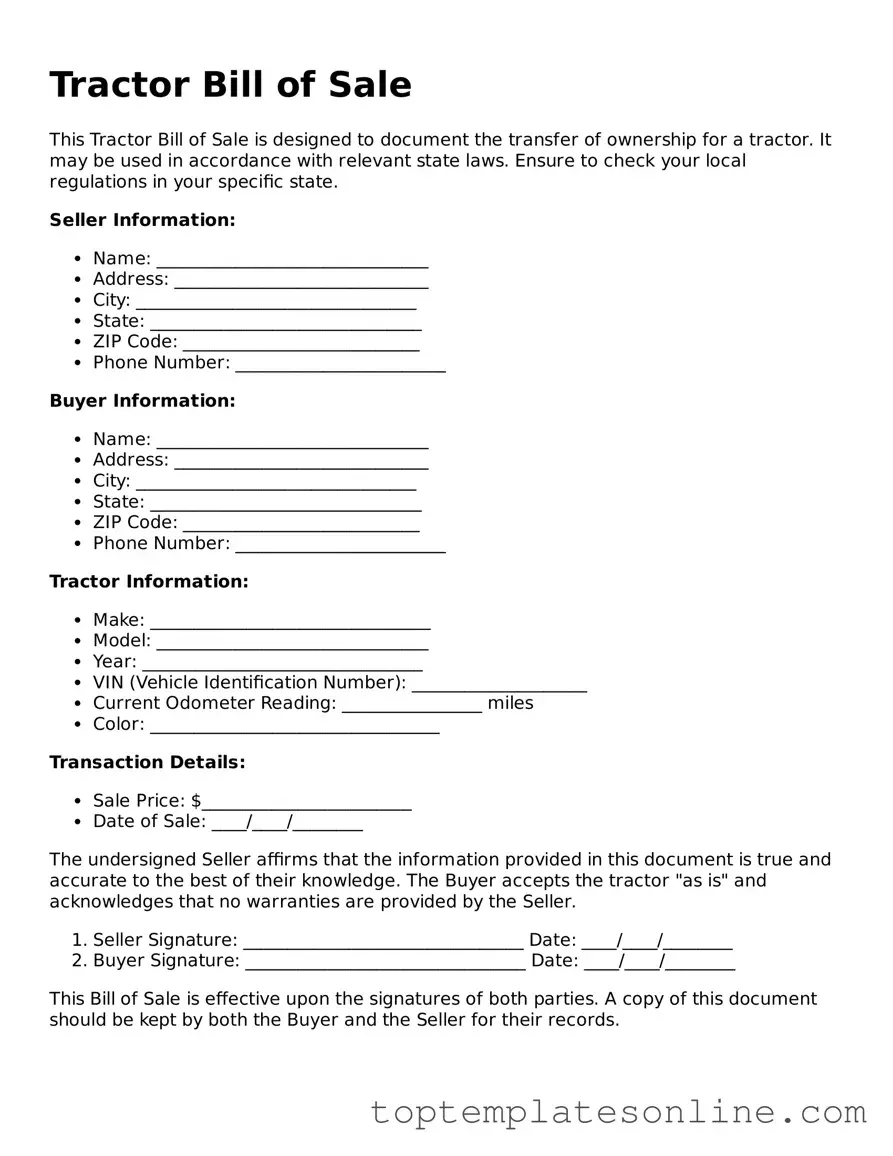Attorney-Approved Tractor Bill of Sale Form
A Tractor Bill of Sale is a legal document that records the transfer of ownership of a tractor from one party to another. This form outlines essential details such as the purchase price, the date of sale, and the identification of both the buyer and seller. Having this document helps protect both parties and provides proof of the transaction.
Customize Tractor Bill of Sale Here
